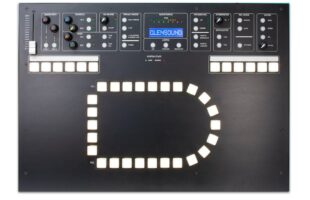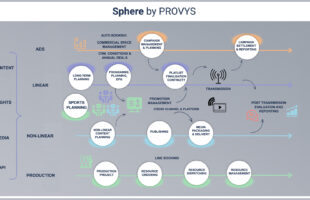BroadcastAsia 2017 has moved to a new venue where the show spans across 3 floors and occupies an area of 20,000sqm. This year, there are 50 new exhibitors with 600 international exhibitors. The show comprises of effective sourcing platforms with thematic zones comprising of Virtual Reality zone and the TV Everywhere! zone. The show has an interesting line-up of educational activities featuring X-periencing Virtual reality @ Innovation Hub and Post production Hub. It also offers an exciting opportunity for executives, broadcasters and even visitors to network. The show will hold an International Conference which will cover four of the hottest topics in the industry where keynote speakers will discuss about OTT 2.0 & monetisation, HDR delivery roadmap for the future, about maximising revenue & monetising data analytics and how IP works in broadcasting. The exhibition includes 8 exclusive hospitality suites featuring products from brands like ARRIS, AirTies, Bright Cove and Skyworth to name a few. You can look forward to interactive and active discussions about the top five trending After a whirlwind of advances in technology, this year’s BroadcastAsia could be the most anticipated yet, with an international exhibition showcasing top technologies across the broadcast spectrum. By Victoriya Priya. Revolutionising broadcast into a regional perspective technologies in Asia such as wireless production, UHD, IP broadcasting, immersive technologies and digital asset management.
Virtual Reality entered the global market and took 2016 by storm, with a record US$2 billion invested into AR/VR startups in the last year. VR also allows you to immerse yourself in an artificial environment, with tech giants racing to develop new ways to incorporate virtual reality into its services. BroadcastAsia2017 International Conference speaker, Lionel Chok says, “With VR, you can’t see the whole scene at once, you have to move your head around as you would in the actual physical environment, and one viewing may not be enough for you to see all there is to see. Audiences are also less distractible, which is the winning ingredient in a multiscreen world.” TV Everywhere! ZoneConsumers are watching more TV content on mobile devices than ever before, with Ooyala finding that mobile video views topped 52% of all views in Q3 of 2016. Ooyala also found an increase in video consumption across all demographics and ages, highlighting the leading role online video have had on all users’ lifestyles. With the ever-evolving nature of film, bold thinking innovations are needed to continuously change the art of technology – a glass free 3D experience is now on the horizon along with 360×360 degree viewing. Cinema has also backed some of the most stunning visual technologies of all time, impacting the way we now see and consume films. Video analytics combines the use of big data tools powered by computer vision and it is growing, soon to be measuring viewer reactions in close-to-real-time, triggering a major impact on broadcasting. Furthermore, performance analytics show the broadcaster, or advertiser, which videos are performing well, viewer engagement, and real-time analytics, to see what is currently trending. BroadcastAsia’s themed guided technology tours or customised selfguided trails help visitors to analyse videos and observe how it affects the entire broadcasting ecosystem and the latest innovations that revolve around it. The IP Inter-Op Lab at BroadcastAsia includes a live broadcast studio, content editing and distribution to OTT, all IP in real time.
The IP Inter- Op Lab broadcasting is redefining the broadcasting industry, providing more operational flexibility and a higher capacity, making it easier to create and deliver interesting content. When a live event occurs, broadcasters and news agencies are now able to easily stream live video over IP onto their webpages from almost any location, providing the ability for them to play a bigger role in direct-to-customer distribution. The OTT development in Asia is finally catching up, and there are more initiatives taking place in this part of the world. According to Alexandre Muller, Managing Director APAC, TV5Monde, content is king whether it is on linear on non-linear and he feels that it is very likely to remain this way for a while. Ian Trow, Senior Director Emerging Technology and Strategy, Harmonic, agrees as he believes that the appeal of a new delivery mechanism or App helps considerably in placing such content, but it depends on the material eventually. Muller also adds that data analytics is critical for programmers and marketers to better understand the usage, the behavior, the expectations of viewers, but also to advertisers and brands in general to maximise their ROI. Steve Davis, Vice President and General Manager, APJ, Ooyala, “The cliché answer is content is king or consumer is king. The fact is they both are. Consumers won’t watch if the content doesn’t match their interests and you can make appealing content without knowing your audience. That’s why analytics is so important. There are so many options, channels, apps and variety today that OTT services have to be laser focused on who they’re targeting and make the best experience possible.” Asia will see the transformation of video delivery, quality and production like the rest of the world in TV and film which will be delivered via IP, in the highest quality possible as networks, connectivity and devices improve throughout the region. There are many broadcasters adopting significantly streamlined workflows in this day and age. In order to protect content shelf life, acquisition is increasingly in 4K. Production ingests and playout are adopting an IP-based 4K / UHD solution with a strong desire for IP interfacing. HDR provision is also starting to emerge as product in the form of screens, set-top boxes and players. The whole nature of a broadcast workflow is changing with a shift from product and appliances to service based provision. The Cloud is a key enabler in this, by allowing service flexibility, scale and renewed focus on cost savings to be achieved in markets. As TV consumption moves online, and content syndication broadens to more online platforms and even regions, the inherent lack of connection and collaboration between these broadcast technologies is slowing down production teams, and costing them more in time and resources. Hence, to be truly effective, new solutions such as media logistics are emerging, that help connect tools to give production teams and broadcasters full visibility into their operations to observe which systems are inefficient and where every asset is in the production cycle. Hybrid models are an emerging trend throughout markets. It’s different for everyone based on their content and their audience. There are more companies recently deploying AVOD models on top of existing SVOD or TVOD models. Malaysia’s Media Prima’s tonton service have both AVOD and SVOD services as there are two massive audiences, one that prefers a freemium model and are OK with the transaction of sitting through ads, and another audience that would rather pay to forego advertising altogether. Vudu, Walmart’s digital entertainment business in the US was traditionally a TVOD service and recently launched Vudu Movies on Us that is a pure AVOD model where both customers find great value in Ooyala. Technology has enabled new creative tools and forms of mass distribution, altering the landscape so fundamentally such that interactivity and immersion have become essential elements of the entertainment experience. In countries such as America, it is difficult for people to try out VR technology as consumers often have to often fork out US$1,000 or more to experience it. On the other hand, in China there are over 100,000 internet cafes offering VR sessions for just a few dollars. VR continues to open doors to new forms of brand exposure for companies, translating to new advertising and sales channels for traditional broadcasters and filmmakers. The goal is to make VR accessible, affordable and widely available where any VR kit that will sell well is likely to be one that pairs with a smartphone. Undoubtedly, Asia is paving the way in the mass adoption of VR technology








